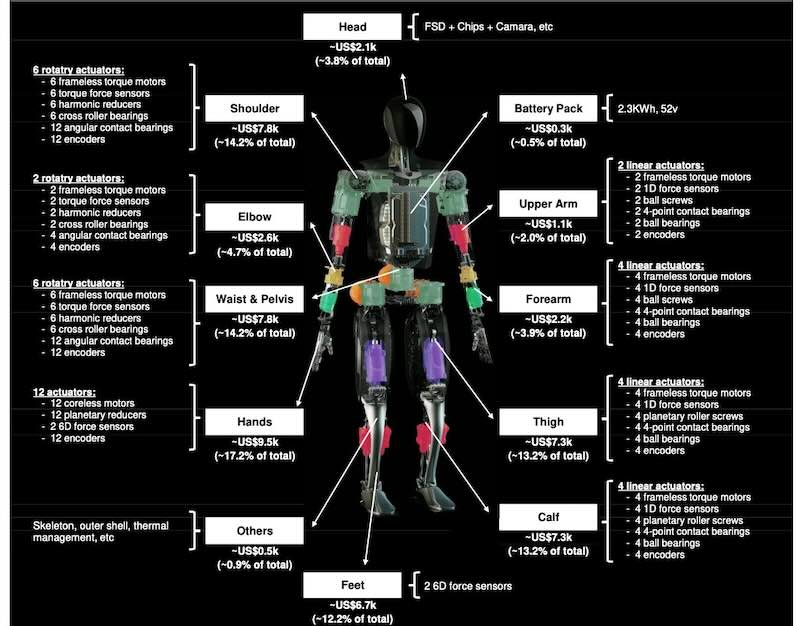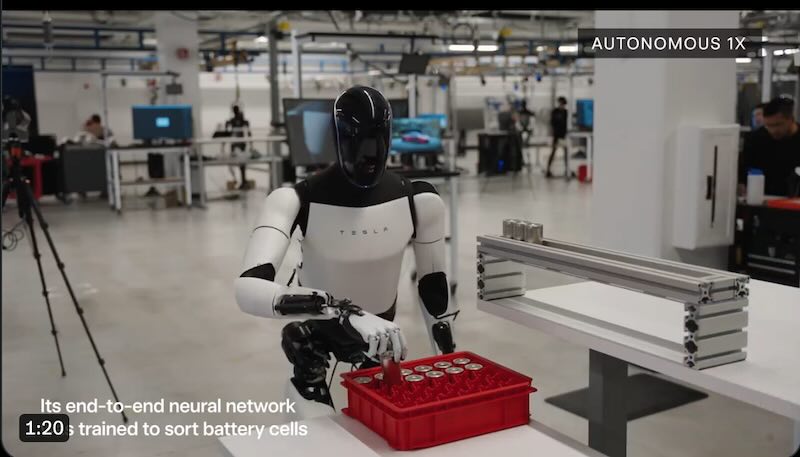Tesla’s Optimus robot is making waves – and not just for its impressive capabilities. Report by Adam Jonas from Morgan Stanley has shed light on the eye-watering costs associated with bringing this humanoid helper to life.
Would you believe that the hands of Tesla’s Optimus robot cost nearly as much as a car? That’s right, according to Jonas’s breakdown of the Bill of Materials (BOM), a pair of these high-tech mitts will set you back a cool $10k.

BOM for Optimus is estimated to be between $50k and $60k. That’s a far cry from Elon ambitious target of $10k per unit. It seems that, for now at least, Optimus won’t be shaking hands with the average consumer anytime soon.
As if the current costs weren’t mind-boggling enough, the latter half of this year promises to bring us the 3 gen of Optimus. This upgraded version will feature hands with 22 degrees of freedom – that’s tech-speak for “even more dexterity and complexity.” While this advancement is undoubtedly exciting, it’s likely to push those already hefty costs even higher.
Despite the steep price tag, Adam Jonas isn’t throwing in the towel on Tesla’s robotic ambitions. In fact, he’s downright bullish about the potential of humanoid robots. In his 10-page note on Tesla, Jonas boldly claims that “the humanoids opportunity is far bigger and faster adopting than autonomous cars & will see a greater quantum of capital behind it.”
How big are we talking? Hold onto your spreadsheets, because Jonas estimates the addressable market for humanoid robots to be a staggering $30 trillion.
Jonas paints a picture of a future where humanoid robots are as commonplace as smartphones. He forecasts a humanoid population of 8 million units by 2040, growing to a whopping 63 million by 2050.
Jonas believes that humanoid robots like Optimus may actually hit the market faster than autonomous vehicles. Why? It all comes down to the controlled environments where these robots can learn and operate, versus the unpredictable chaos of public roads, (Optimus robot handling real-world tasks via running entirely end-to-end).
So, how does Tesla plan to bridge the gap between the current $50k-$60k production cost and Musk’s target of $20k per unit? Jonas points to economies of scale, AI-driven R&D acceleration, and cost-effective components from China as potential pathways to bringing down the price.
Related Post: Tesla Optimus Patent Reveals Secrets of Its Cable-Driven Robotic Hand
